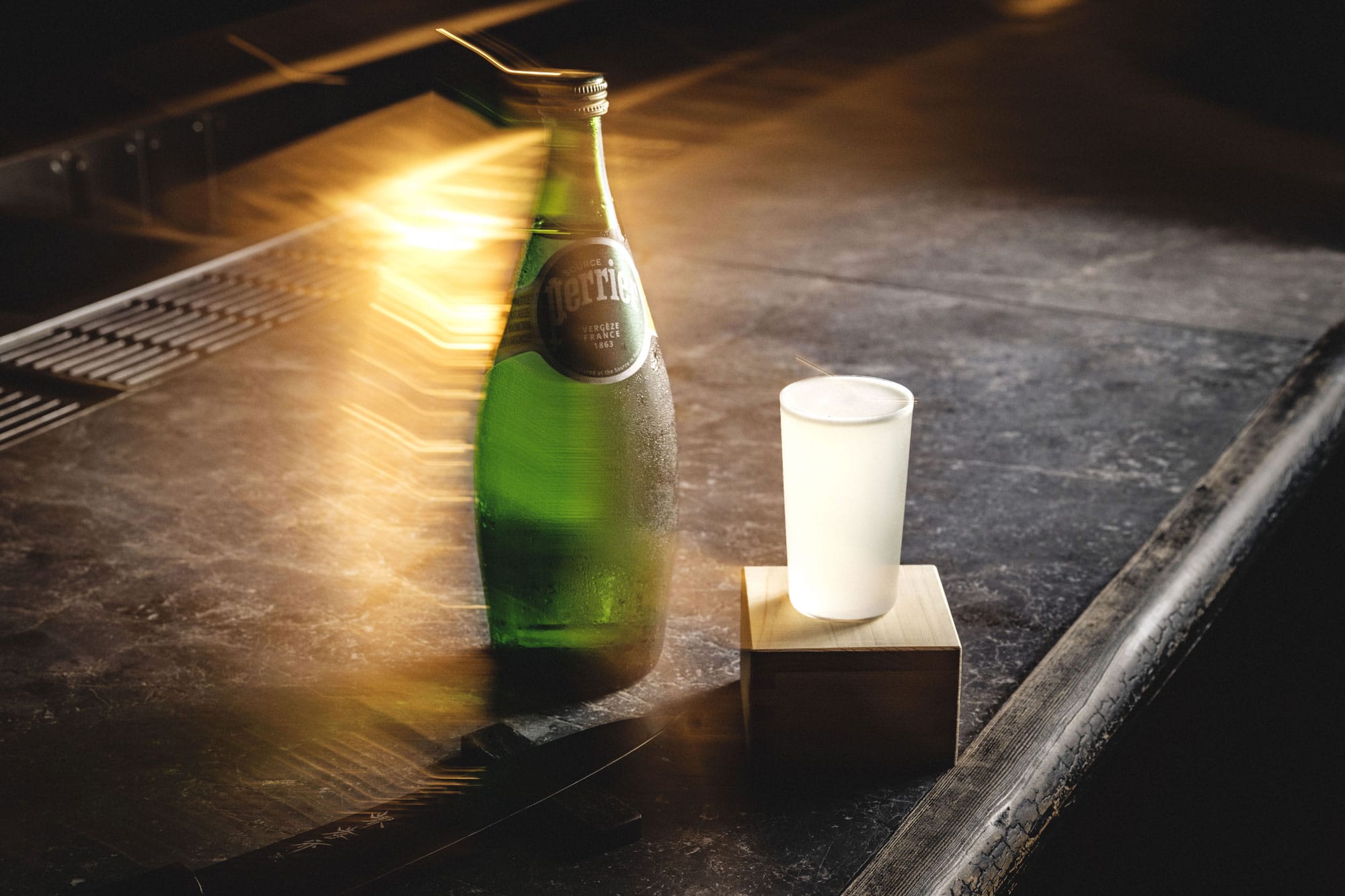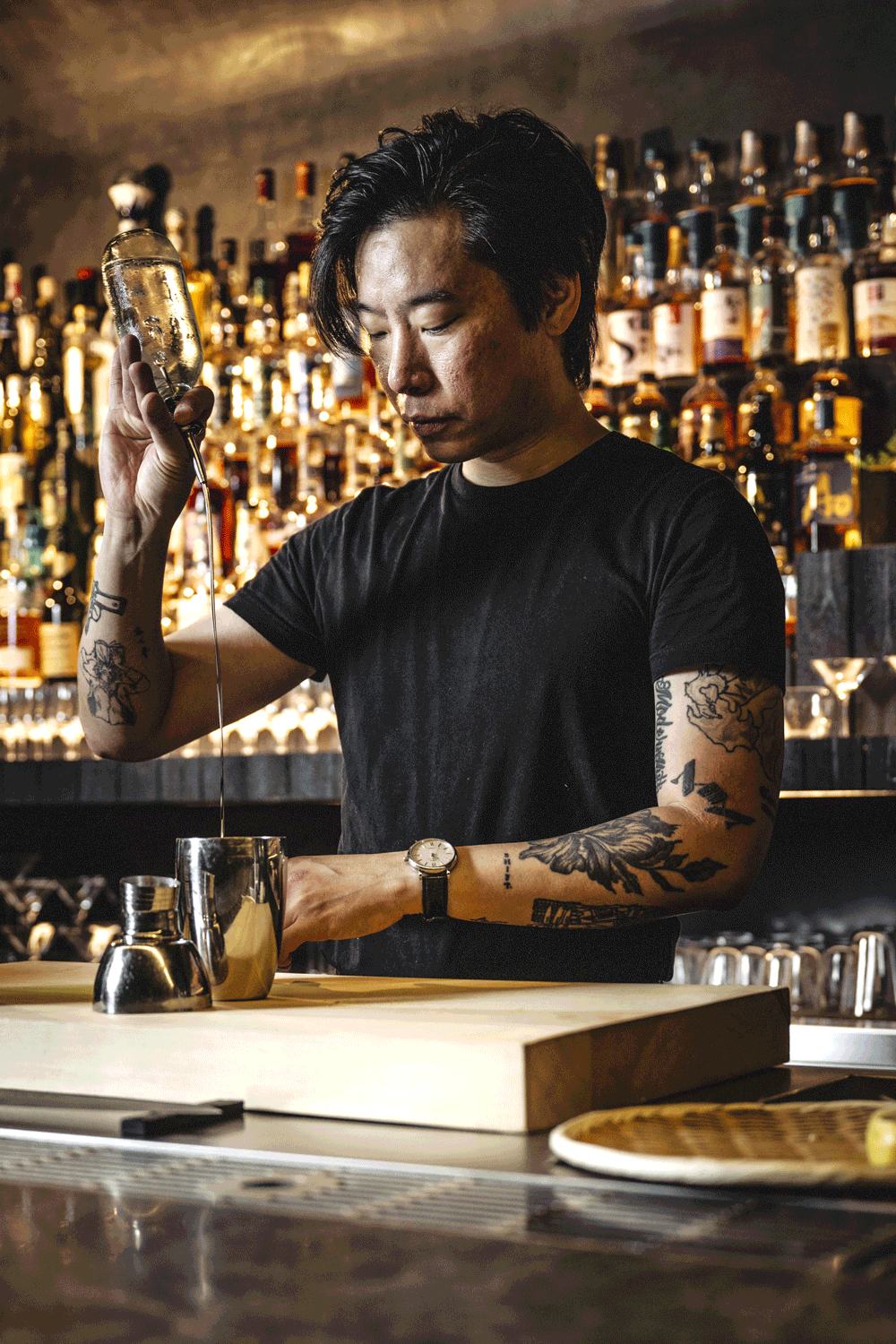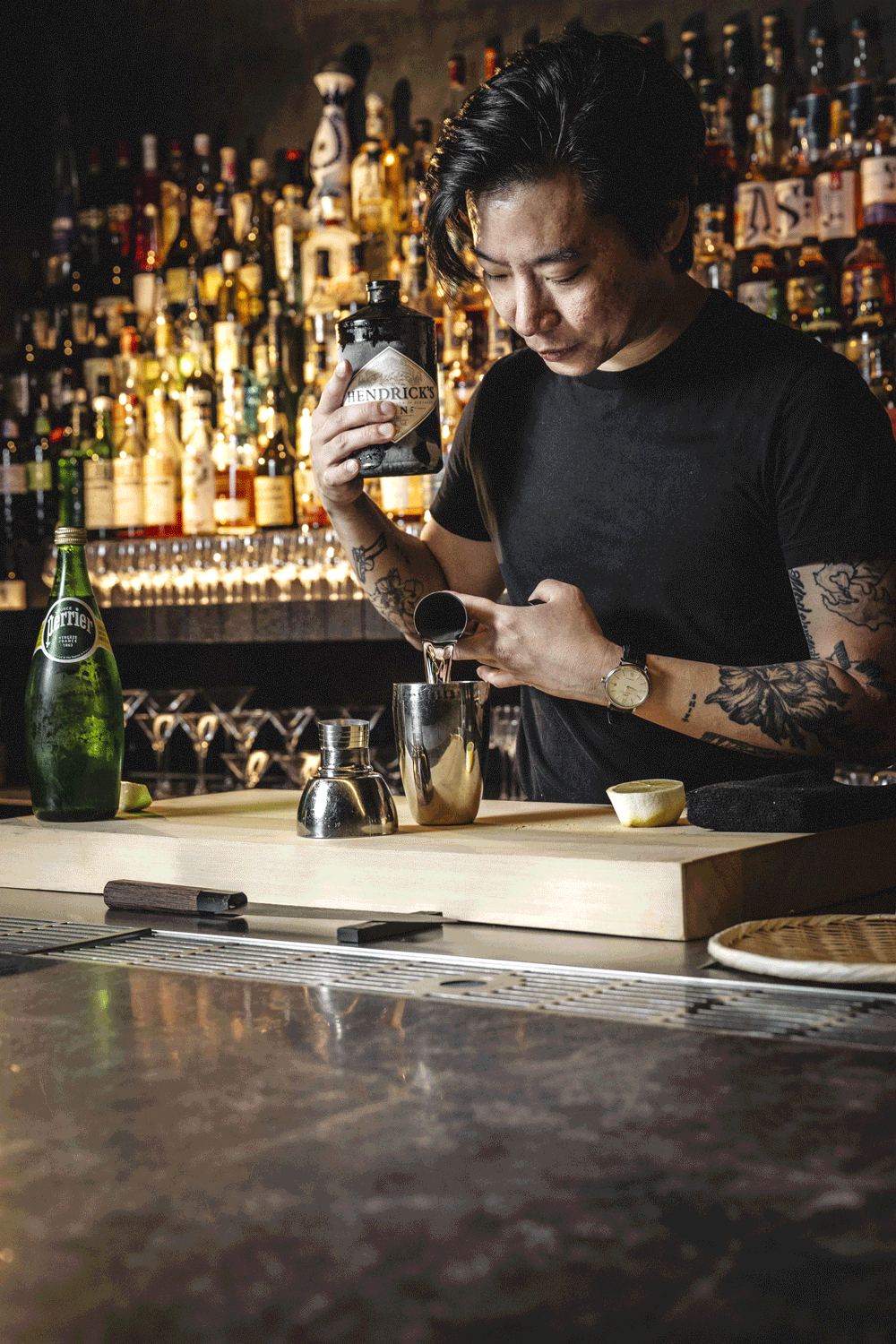Water is an essential element in any quality cocktail. It’s there in the oft-quoted first definition of a cocktail, dating back to 1806, when the editor of The Balance and Columbian Repository described it as “a stimulating liquor, composed of spirits of any kind, sugar, water, and bitters.” Whether your drinks are served short or long, water is a crucial — if often overlooked — component.
Perrier is one water that isn’t overlooked. Perrier’s brilliant green glass, pear-shaped bottle, and its striking gold top crown is iconic, and you’ll see it being offered to guests in at the world’s best bars. After all, there is a reason why it was once called the champagne of waters.
Here, we take a look at just what it means to make mineral water, before delving into a (very) brief history of Perrier, how it’s made, and some classic ways to use it. Santé!

What exactly is mineral water, anyway?
A true mineral water — like Perrier — is water suffused with minerals from the area at which it is collected. Because Perrier is French, it is subject to European Union regulations, which specify that to be labelled as natural mineral water the water must be in its natural state, and bottled at source, and “may not be the subject of any addition other than the introduction or the reintroduction of carbon dioxide.” The minerals found in these waters therefore must be — according to the EU — consistently present in the water, however, they are allowed to carbonate the water.
A (very) brief history of Perrier
218BC: Hannibal crosses the Pyrenean Alps, stopping at a bubbling spring to rest, and maybe feed an elephant or two; some believe the spring at which they stopped to be none other than Les Bouillens.
58BC: The Romans come to town, and recognise the benefits of its mineral rich waters, and build themselves a spa on the site of Les Bouillens.
1863: Napoleon III granted the first authorisation to bottle water from Les Bouillens, which takes its name from the Occitane word for ‘bubbling spring.’
1898: It took a doctor — Dr Louis-Eugène Perrier — to take control of the company and begin bottling the water from Les Bouillens at the source in 1898.
1903: Englishman St John Harmsworth bought the Les Bouillens spring, and named it Perrier in honour of the good doctor’s work. He also developed Perrier’s iconic green bottle, basing its shape on a wooden weight he would use at the gym to exercise with — and echoing the health conscious origins of the Les Bouillens spring.

How is Perrier made?
Perrier has its home in the south of France in the Gard department in the Languedoc, in a town called Vergèze, where just 5,000 or so people live. Perrier is the area’s largest employer, with some 1,000 people working at its factory in Vergèze.
The water for Perrier comes from a number of wells — the locations are kept secret — and pumped from an aquifer some 150 metres below the surface. The aquifer is replenished over time, as rainwater falls on the ground and slowly filters down through volcanic rock, bringing with it dissolved minerals. Perrier’s bubbles are due to its seven grams of CO2 per litre. It is also made with exceptionally low sodium and bicarbonate levels, which makes it crisp on the palate and well suited to cocktails and highballs. After carbonation, Perrier is then bottled at the source.
How to use it
There’s a long history of mineral water in cocktails. The Savoy Cocktail Book’s 1930 recipe for Champagne Punch calls for a full quart of it (and calls for sparkling water in its Claret Punch, too).
With a less aggressive carbonation than soda water, but an often richer mouthfeel due to the array of minerals, Perrier is well-suited to Highballs and Fizzes — not only will dilution bring out nuances in the spirit that might otherwise be locked up, the mineral content can help make other flavours in your drinks pop, in a manner similar to sub-threshold salting.
Below, Wen Wang — bartender and proprietor of Bar Sumi, in Sydney — shows us two ways with Perrier: a refreshing Collins style, and a Silver Gin Fizz made the Bar Sumi way.

Silver Gin Fizz a la Bar Sumi
1. Add 15ml of sugar syrup and 10ml of egg white to shaker.
2. Add 60ml of gin.
3. Add 25ml of lemon juice.
4. Shake with ice.
5. Pour 60ml of chilled Perrier into an empty cold Fizz glass.
6. Strain the contents of the shaker into the glass.
7. Spritz an atomised spray of yuzu distillate across the top of the drink.

John Collins
1. Add 60ml of gin to a cocktail shaker — for a Tom Collins, pour Old Tom gin.
2. Add 20ml of lemon juice.
3. Add 15ml sugar syrup.
4. Shake with ice to combine ingredients.
5. And then strain into a tall glass over ice.
6. Theatrically pour your Perrier to fill the glass, approximately 60ml.
Australia’s best bars are pouring Perrier for their guests — bars like the award-winning Maybe Sammy, and — pictured above — Bar Sumi in the Sydney CBD.
Perrier is available in Australia through DKSH Grocery Connect — for more information email groceryconnect@dksh.com.










